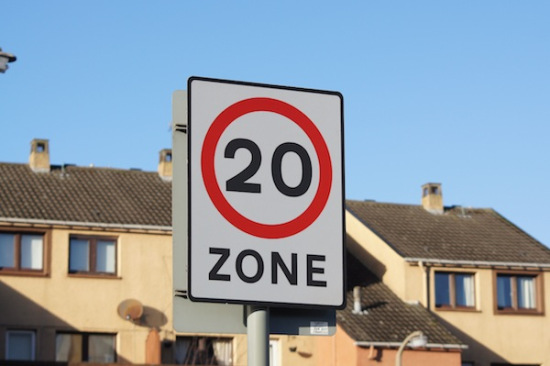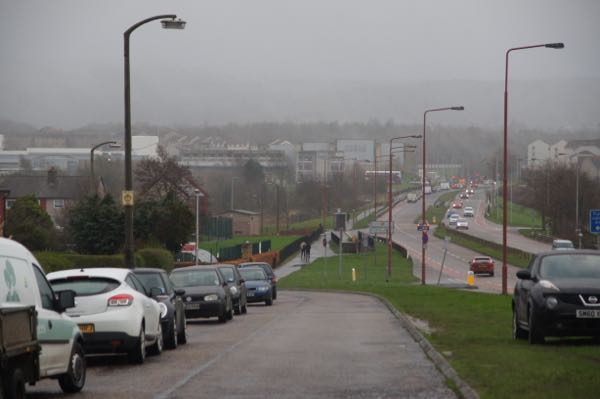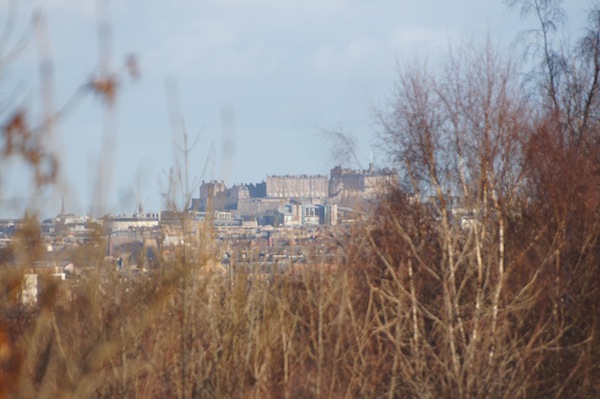The City of Edinburgh Council has approved plans to reduce the speed limit of some streets across the city, meaning that around 80% of the city’s streets will be subject to a 20mph limit.
To find out if your street is included in the list then use this interactive map here:
The proposal has led some to raise concerns about how the changes will affect residents. The council has released the following information to disprove some of the myths.
Myth 1: This is a ‘blanket’ roll-out
This is not a blanket implementation. The proposals are for a network of 20mph streets chiefly in residential and shopping areas, complemented by a network of 30 and 40mph roads on key arterial routes in the city suburbs. This will mean that impacts on journey times should be relatively modest In terms of main roads which are earmarked for a new 20mph limit, a high proportion of collisions happen on these roads. In particular, pedestrian and cyclist casualties tend to be concentrated on shopping streets and on other main roads in the city centre and inner suburbs.
These are also the roads that are used by the most people and that have the greatest mix of pedestrians, cyclists and motorised vehicles. A lower speed limit here can help improve safety and also improve the environment for all road users.
Criteria for selecting potential 20mph streets were agreed in outline by the Council’s Transport and Environment Committee and then fine-tuned by a sub-group of its Transport Forum, including representatives from a range of interested groups. We’ve made changes to the proposed map based on feedback from individuals, community groups and organisations like Lothian Buses to make sure we get the balance right.
The extensive consultation that we have carried out over several years shows a high level of public support for our proposals. During the recent consultation there was a lot of support for our approach, in particular for the degree to which it seeks to adopt a consistent approach to similar types of road.
Myth 2: Safety won’t be improved by lowering speed limits
There is considerable evidence in support of reducing speed limits in urban areas. A 2010 Department for Transport (DfT) publication which looked at the relationship between speed and risk of fatal injury found that the risk of fatal injury to pedestrians rose from under 1% at an impact speed of 20mph to 5.5%, or 1 in 20, at 30mph. Above 30mph risk increased very substantially, to over 30% at an impact speed of 40mph.
A different large scale study looking at the effect of speeds on overall accident numbers found a clear relationship. On the types of urban road likely to be considered for a 20mph limit the study found the accidents could be expected to fall by between 4% and 6% for each 1mph reduction in average speed. The greatest reductions were achievable on “busy main roads in towns with high levels of pedestrian activity”
Other cities that have introduced 20mph speed limits have seen reductions in casualties. For example in Portsmouth it is estimated that 20mph limits have lowered road casualties by 8%, while in Warrington there has been a reduction in collisions of 25% in 20mph speed limit areas; Evidence from the South Edinburgh pilot area also points to a reduction in casualties (20% to January 2014).
Myth 3: Slower speeds will increase congestion
Research indicates that vehicles flow more smoothly through junctions at slower speeds.
Myth 4: Slower speeds will increase emissions and worsen air quality
Research indicates vehicles flow more smoothly through junctions at slower speeds. Additionally, as a result of reduced acceleration and braking, 20mph may help to reduce fuel consumption and associated emissions.
Although research is not conclusive, some environmental benefit from the change is expected from helping to unlock the potential for walking or cycling short distances instead of driving.
Myth 5: 20mph speed limits won’t be enforce
The legal speed limits on any roads in the Capital are enforced by Police Scotland and this will be no different whether the street is 20, 30 or 40mph. Police will direct their resources to particular problem areas, as they do currently, and drivers caught flouting the limit will face warnings or speeding fines. Additional measures such as Vehicle Activated Signs could also be installed in streets where particularly high numbers of contraventions are detected or reported.
Myth 6: 20mph limits in shopping streets will be bad for businesses
It is considered that businesses will benefit from the increased “liveability” which slower speeds will foster in their area, with more people attracted to spend time in shopping streets where they feel safer and the environment is generally more pleasant.
Opinion research carried out in the South Edinburgh 20mph pilot area found that residents felt the new speed limit had had a range of positive impacts, the most often mentioned being improved safety for children, for walking and for cycling.
20mph speed limits encourage more considerate driving, leading to safer streets for all road users, including motorists, cyclists and pedestrians. The lower speeds reduce the risk and severity of road collisions. Reducing traffic speed helps make people feel more confident about being on their local streets and helps children and elderly people to travel independently and safely.
Calmer road speeds also help to make walking and cycling more attractive options, contributing to less traffic congestion, better health, less noise, more social interaction and stronger communities.
Myth 7: The city will be covered in speed humps
The new limit will be introduced without traffic calming measures. However, if monitoring finds speeds remain significantly above 20mph on certain streets despite signage and public awareness of the limit, we will consider speed reducing measures on the roads concerned. On residential streets this is likely to mean road humps, on main roads other methods would be deployed, for example road markings (e.g. cycle lanes) or central islands which tend to reduce speeds by reducing the apparent width of roads.
Myth 8: Journey times will be much longer
Research in other cities, surveys of current speeds, and results of the pilot project in Edinburgh, suggest that journey times will not significantly increase and by easing traffic flow, 20mph may actually reduce some journey times.
We would expect changes not exceeding around 25 seconds per mile, probably significantly lower (around 10 seconds per mile has been found in central parts of Bristol where a limit has now been introduced) . We will be carrying out more research on this matter in Edinburgh and will post the results on the Council’s website.
Myth 9: Signs alone don’t lower drivers’ speeds
National evidence has shown that sign‐only 20 mph speed limits can help to reduce average speeds and improve safety. Evidence from the pilot scheme in South Edinburgh showed similar results, with average speeds reduced by around 10% to just over 20mph, and with larger falls in speeds (around 14%) on the roads that had higher average speeds before the limit was introduced. Of 1000 people surveyed in the South Edinburgh pilot area, 79% supported the 20 mph limit,just 4% opposed it.
Myth 10: This is an attack on motorists
We are not stopping people from driving. Our aim is to balance the needs of drivers with the safety and environment of local residents. 20 mph creates a safer environment for everyone, including motorists.
The proposals are for a network of 20mph streets chiefly in residential and shopping areas, complemented by a network of 30 and 40mph roads on key arterial routes in the city suburbs to keep traffic moving.
Slower speeds will not significantly increase journey times and by easing traffic flow, may actually reduce some journey times.
You can find out more information about the changes as well as list of some of the research mentioned on the Council’s website.





